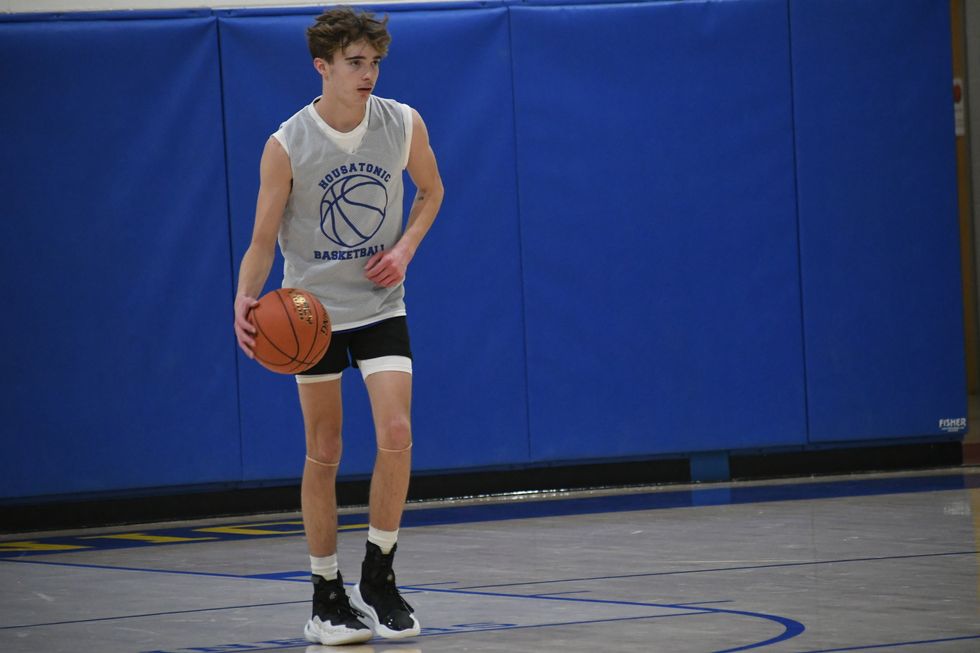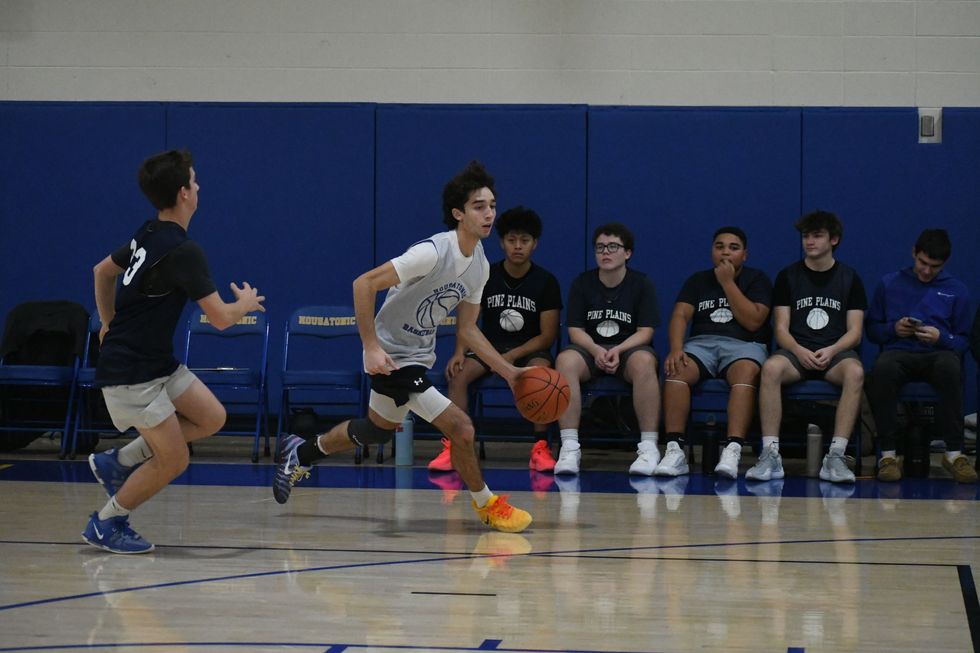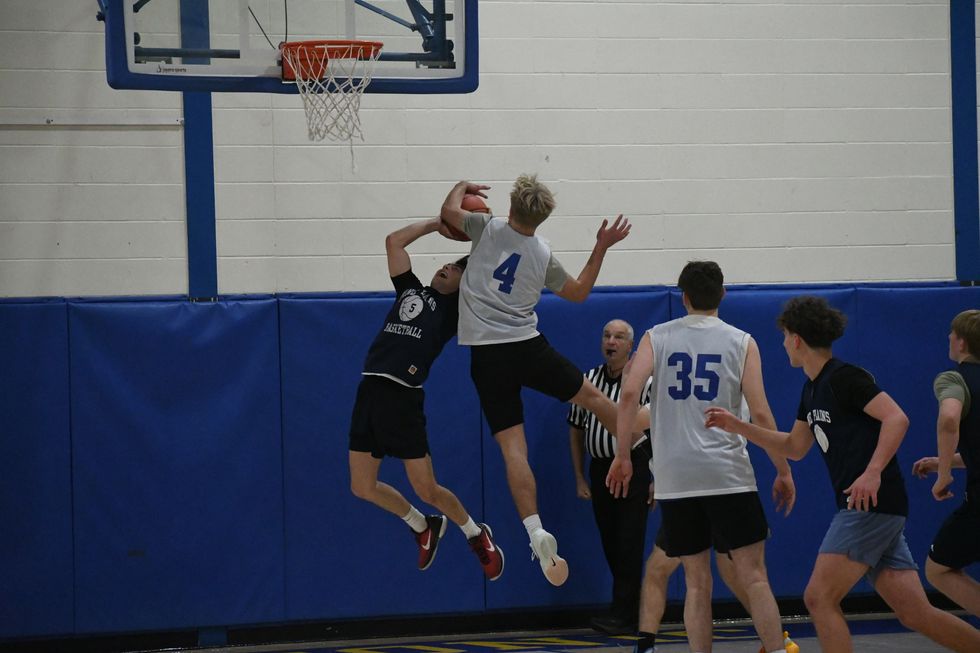From Cradle to Crypt, A History of Horror Films


If you are looking to get into the Halloween spirit and learn about the history of horror film, this is your year to hit up big-screen October showings in the Tristate region. Between these four events, you can get the full range of horror film history and genres.
It’s Alive: The Horror Film Is Born
Horror got its start in the silent era. The Bardavon in Poughkeepsie, N.Y., is hosting a screening on Oct. 29 of what some call the very first (and in my opinion, still scariest) horror film: “Nosferatu,” released in Germany in 1922 and the U.S. in 1929.
This first film version of the Dracula mythos was an unofficial and unauthorized adaptation of the 1897 novel by Bram Stoker; the names of the characters had to be changed for the film.
Although truly terrifying, “Nosferatu” is also beautiful. It uses shadow and light to create an atmosphere of mystery and foreboding. It was one of the first films to use special effects to create an impossible monster, one that can only exist on the screen. This movie shows where it all started with horror movies and is a must-see for anyone interested in not just horror but film in general.
“Nosferatu,” directed by F.W. Murnau and released in 1922, will be shown on Friday, Oct. 29, 7:30 p.m. at Ulster Performing Arts Center, on Broadway in Kingston, N.Y., with live organ accompaniment by John Baratta.
All seats are $6, Bardavon members are free. There will be costume contests, photo booths and more. Go to www.bardavon.org for information.
Romance and Gothic Terror
Moving forward chronologically through film history, the Kent Memorial Library in Kent, Conn., is offering weekly showings of “vintage horror” on an outdoor screen this month.
Featuring movies from the 1930s and early 1940s, the library’s film choices (curated by Ben Rybeck from House of Books) offer a Gothic and atmospheric lineup of black-and-white classics. These films may be less gory and shocking than modern horror — and are therefore good for all ages.
But they are also important moments in film history; and they offer a different type of horror than the modern viewer is used to: the slower build of terror, a reliance on an atmosphere of creepiness full of cobwebbed and candle-lit castles dancing with shadows and foggy, moonlit nights — rather than kill counts and jump scares.
There is also the romance of the Gothic monsters. Unlike the modern horror slashers who are stoic, silent juggernauts of strength who kill single mindedly, the Gothic villain is psychologically complex — and often even sympathetic.
“Dracula” was shown on Oct. 7. Next in the series is “The Old Dark House” on Oct. 14. This 1932 release is a lesser known black-and-white horror film by James Whale — best known for directing “Frankenstein” and “Bride of Frankenstein.”
This film was recently featured on the Criterion Channel’s collection called Queersighted Horror (Queer Fear). Whale’s own sexuality has caused many of his films, including “The Old Dark House,” to be re-analyzed through the lens of queer subtextual themes in pre-code Hollywood.
Whale’s films set a precedent for the horror film as a place for the outsider, “the othered,” to find comfort — which is why horror films are often so closely entangled with queer sensibility. After that is “Cat People” on Oct. 21; and another Whale film, “Bride of Frankenstein” Oct. 28.
The free outdoor movies at the library begin at 7 p.m. Blankets, chairs and cozy apparel are encouraged. Registration is not required but is helpful, kla-bmcallister@biblio.org.
Three Decades of Horror
The Millerton Moviehouse in Millerton, N.Y., has an October lineup that covers the history of modern horror through the decades. Manager Casey Lehman has curated a list that spans three different decades, starting in the 1960s and ending in 1990.
Each film is one that was influential on horror as we know it today — both their story themes as well as their cinematic techniques used to instill fear.
The series started on Oct. 6 with Alfred Hitchcock’s 1960 film, “Psycho.”
The feature on Oct. 13 and 16 was “The Bird with the Crystal Plumage,” representing the “giallo” genre from Italy in the 1970s that, while lesser known in the States, has been hugely influential on the aesthetics of modern horror worldwide.
The two remaining films this month are both based on Stephen King novels.
Representing the 1980s is Stanley Kubrick’s “The Shining,” which remains one of the most beautifully shot and psychologically complex and terrifying horror films, with legendary acting from Jack Nicholson and Shelley Duvall. Don’t miss the chance to see it on a big screen on Wednesday, Oct. 20, at 7:30 p.m. and Saturday, Oct. 23, at 9 p.m.
Finishing the Moviehouse lineup is “Misery” from 1990. Kathy Bates won an Oscar for her performance as a crazed fan of the novelist main character, whom she traps in her isolated home during a snowstorm. The COVID-19 isolation of the past two years will add to your appreciation of this film’s claustrophobic suspense.
See “Misery” on Wednesday, Oct. 27, at 7:30 p.m. and Saturday, Oct. 30, at 9 p.m. For more information and to order tickets go to www.themoviehouse.net.
And at Last: It’s ‘Halloween’
Arrive in the cinematic modern day at the Four Brothers Drive-In in Amenia, N.Y., with a double feature: the brand-new “Halloween Kills” and “Halloween” from 2018.The two most recent installments in the long-running Halloween franchise, started by John Carpenter in the 1970s, these two films are slick and modern but with plenty of homages to their horror history — and Jamie Lee Curtis reprising her role as the Final Girl.
There are other activities that evening as well. For information, go to https://playeatdrink.com and www.blackholemonoplex.com/HOLEAWEEN.
The Salisbury Winter Sports Association (SWSA) will host its annual Junior Jump Camp, a two-day introduction to ski jumping, on Saturday and Sunday, Dec. 27 and 28, from 9 a.m. to 2 p.m. at Satre Hill in Salisbury.
The camp is open to children ages 7 and up and focuses on teaching the basics of ski jumping, with an emphasis on safety, balance and control, using SWSA’s smallest hill. No prior experience is required.
The cost is $50 per child and includes instruction and lunch on both days. For more information or to register, visit www.skireg.com/swsa-camp or email info@jumpfest.org
Jesse Bunce, first selectman of North Canaan.
LITCHFIELD — The Northwest Hills Council of Governments welcomed six newly elected municipal leaders Thursday, Dec. 11, at its first meeting following the 2025 municipal elections.
The council — a regional planning body representing 21 towns in northwest Connecticut — coordinates transportation, emergency planning, housing, economic development and other shared municipal services.
Barkhamsted First Selectman Meaghan Cook, Goshen First Selectman Seth Breakell, Kent First Selectman Eric Epstein, Norfolk First Selectman Henry Tirrell, North Canaan First Selectman Jesse Bunce and Torrington Mayor Molly Spino were each elected to their post in November.
They filled the seats of their predecessors on the COG, who were each given a toast of appreciation: Nick Lukiwsky (Barkhamsted), Todd Carusillo (Goshen), Marty Lindenmeyer (Kent), Matt Riiska (Norfolk), Brian Ohler (North Canaan) and Elinor Carbone (Torrington).
COG Executive Director Rob Phillips said the outgoing members were given a going away mug that read “You’re living the dream still.” Members voted to appoint Warren First Selectman Greg LaCava to fill a vacancy on the Council’s Executive Committee. COG members voted by paper ballot, and LaCava defeated Burlington First Selectman Doug Thompson for the vacant seat.
Ryan Segalla takes a fadeaway shot over a defender.
FALLS VILLAGE — Housatonic Valley Regional High School’s boys basketball team defeated Pine Plains High School 60-22 in a scrimmage Tuesday, Dec. 9. The non-league preseason game gave both sides an opportunity to run the court ahead of the 2025-26 varsity season.
HVRHS’s senior-heavy roster played with power and poise. The boys pulled ahead early and kept their foot on the gas through to the end.
By halftime the score was 33-8. Junior varsity players subbed in for the second half, but not before the starters got some in-game dunk practice. By the end Housatonic totaled 60 points to Pine Plains’ 22.

Nick Crodelle led the Mountaineers offensively with 13 points. Anthony Labbadia and Wyatt Bayer scored nine points each. Anthony Foley scored eight points. Owen Riemer and Ryan Segalla each scored seven points. Peyton Bushnell hit a three-pointer. Jaxon Visockis and Henry Berry each scored two points.
HVRHS begins Berkshire League competition on the road at Nonnewaug High School Tuesday, Dec. 16, with a 6 p.m. tip off.


Katie Moore delivers toys to the Stuff a Truck campaign held by the Kent Volunteer Fire Department last weekend. Donated toys are collected so that parents, who need some assistance, may provide their children with gifts this Christmas. Accepting the donation are elves Fran Goodsell and Karen Iannucci
KENT — Santa’s elves were toasty warm as they collected toys for the children of Kent.
Keeping with annual tradition, Fran Goodsell and Karen Iannucci manned the Stuff a Truck campaign sponsored by the Kent Volunteer Fire Department on Saturday, Dec. 6, and Sunday, Dec. 7. Sitting in front of a fire pit in the firehouse parking lot between donations from residents, they spoke of the incredible generosity displayed every season. That spirit of giving was clear from the piles of toys heaped on a table.
“This is always so gratifying,” said Goodsell, noting that certain businesses, including High Watch Recovery Center, Wilson’s, and Kent and South Kent schools needed a “shout out” for all they’ve done. She said South Kent School focuses on gifts for older children, which is a group that often is overlooked.
Unwrapped contributions are sought for children 1 to 15 years old who might otherwise find little or nothing from Santa, they said. The bounty will be set up at the Community House on Thursday, allowing parents to come and take what they want. If there are still items left, grandparents are invited to “shop.”
The atmosphere was festive Saturday, as a stuffed dog began barking a Christmas tune whenever someone walked in front of it. A large decked-out bear posted at the parking lot entrance reminded passersby of the event. Visiting children were able to get a close-up look at the fire truck and walk through the firehouse if they wished.
Goodsell and Iannucci were very grateful to those who donated wood for the fire pit. “And so many asked if they could bring us coffee or hot chocolate,” said Iannucci.
Goodsell said many who came talked about having grown children who were recipients of the gifts when their families were struggling. “They are so glad to be able to give back,” she said.